Types of vaccines for COVID-19
FOR EDUCATIONAL AND KNOWLEDGE SHARING PURPOSES ONLY.
SOURCE. British Society for Immunology
On this page, you will find infographics to explain how different types of vaccines work, including the Pfizer/BioNTech vaccine, the Moderna vaccine and the Oxford/AstraZeneca vaccine. Scroll down to discover more, click the download link to print the graphic or share on social media tagging @britsocimm to help strengthen public understanding.
As the UK COVID-19 vaccine approval and roll out continues to evolve, these infographics will be updated. They are accurate as of August 2022.
Vaccines train your immune system using a harmless form of the virus, SARS-CoV-2, which causes COVID-19. Vaccines stimulate an immune response without causing illness. Each type of vaccine for COVID-19 works differently to introduce antigens, which are unique features of the SARS-CoV-2 virus, to your body. The antigen triggers a specific immune response and this response builds immune memory, so your body can fight off SARS-CoV-2 in future.
Viral vector vaccines for COVID-19
The University of Oxford/AstraZeneca vaccine uses this technology to protect against COVID-19. This type of vaccine uses an unrelated harmless virus (the viral vector) to deliver SARS-CoV-2 genetic material. When administered, our cells use the genetic material to produce a specific viral protein, which is recognised by our immune system and triggers a response. This response builds immune memory, so your body can fight off the virus in future.
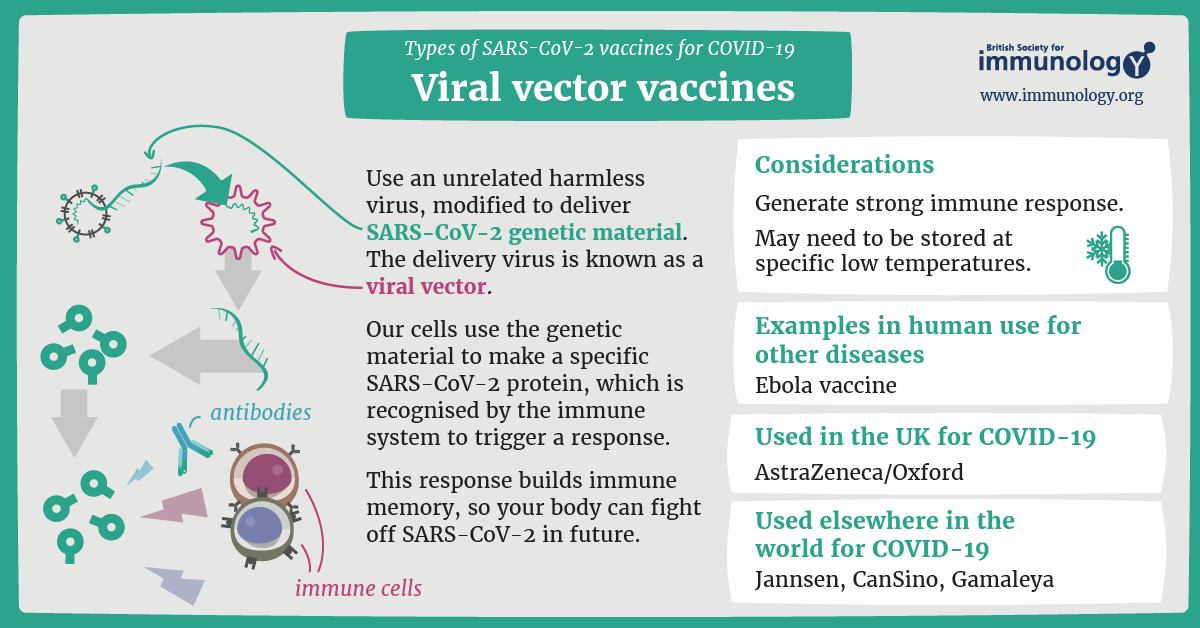
Genetic vaccines for COVID-19
The Moderna and Pfizer/BioNTech COVID-19 vaccines use this type of technology to train the immune system. The vaccines contains a segment of genetic material of the SARS-CoV-2 virus, which causes COVID-19. The genetic material, RNA in the case of Moderna and Pfizer/BioNTech vaccine, codes for a specific viral protein. When administered, your cells use the genetic material from the vaccines to make the protein, which is recognised by your immune system and triggers a specific response. This response builds immune memory, so your body can fight off SARS-CoV-2 in future.
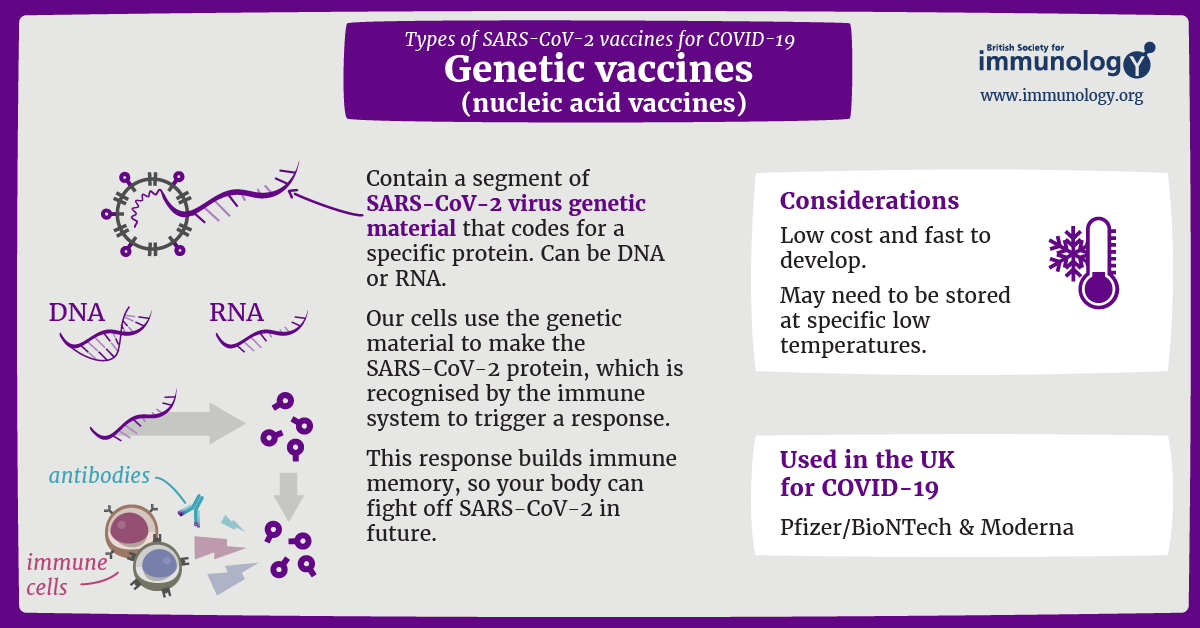
Inactivated vaccines for COVID-19
This type of vaccine contains the killed SARS-CoV-2 virus, which is recognised by the immune system to trigger a response without causing COVID-19 illness. This response builds immune memory, so your body can fight off SARS-CoV-2 in future.
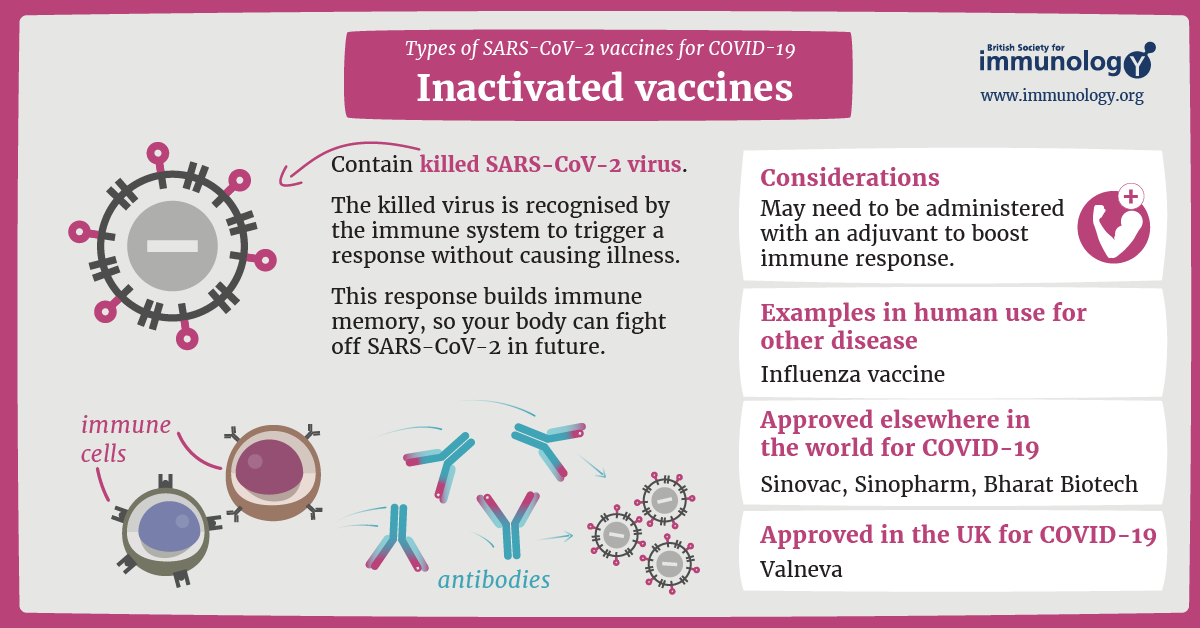
Attenuated vaccines for COVID-19
This type of vaccine contains the weakened SARS-CoV-2 virus, which is recognised by the immune system to trigger a response without causing COVID-19 illness. This response builds immune memory, so your body can fight off SARS-CoV-2 in future.
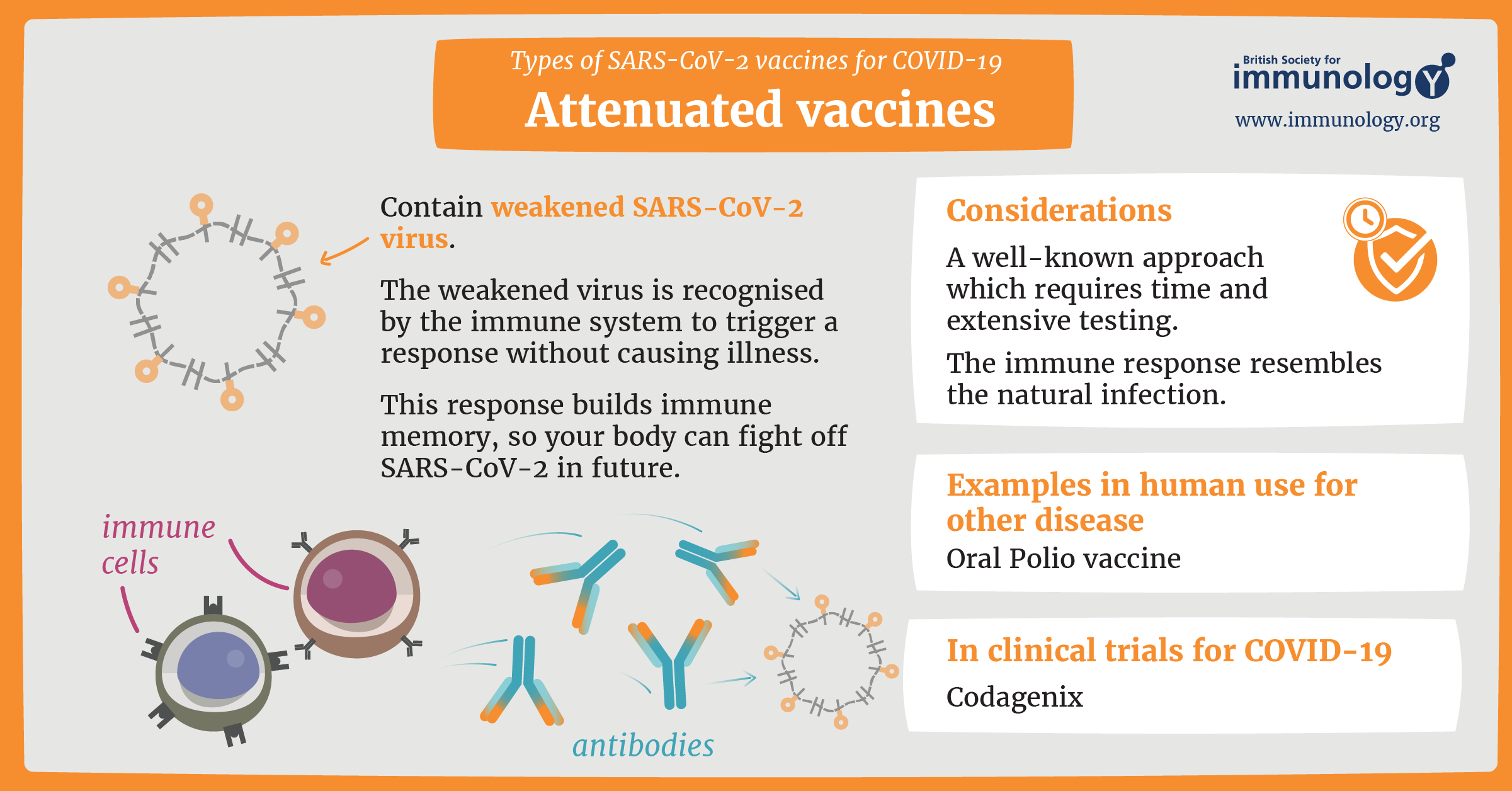
Protein vaccines for COVID-19
This type of vaccine contains proteins from the SARS-CoV-2 virus, which are recognised by the immune system to trigger a response. This response builds immune memory, so your body can fight off SARS-CoV-2 in future.
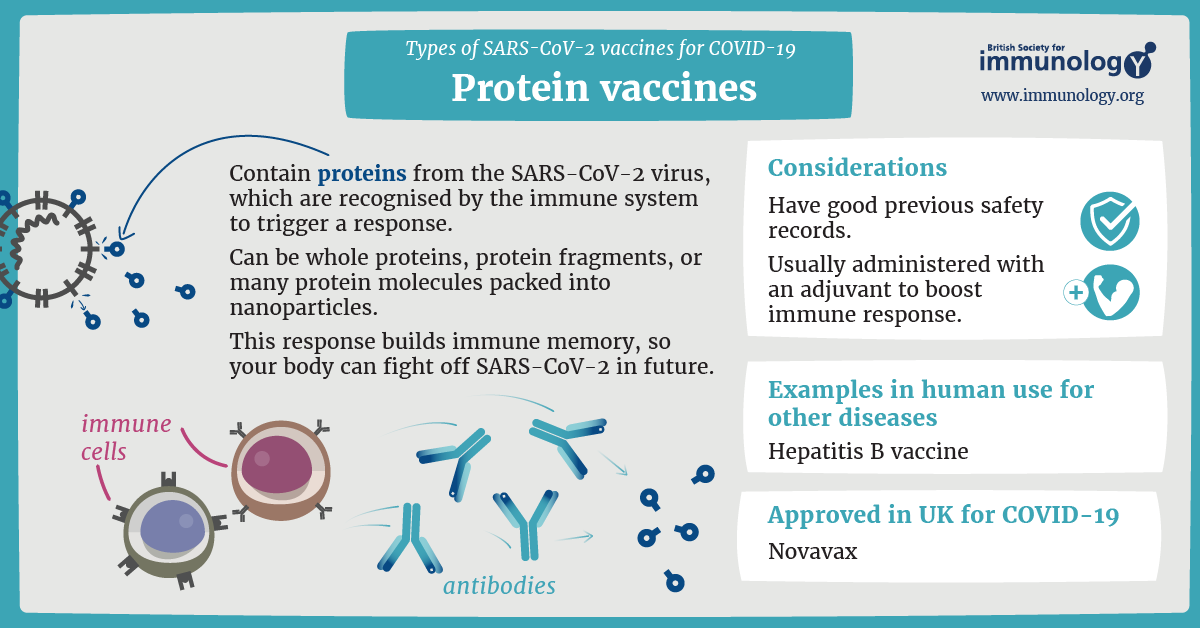
If you are interested in translating these resources into another language, please email bsi@immunology.org. Please do not translate these resources without our permission
